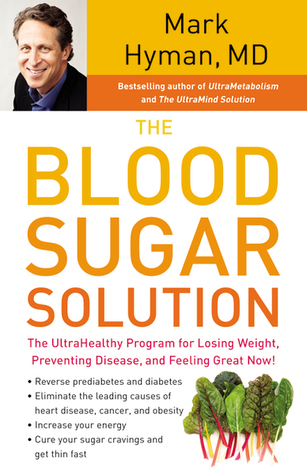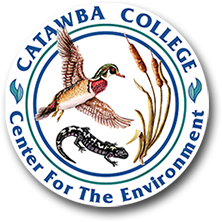| Hippocrates | | |
Let food be thy medicine and thy medicine be thy food. |
| Our Offices |  | |
|
|
JOIN OUR LIST
|
 |
| FREE THOUGHTS | |
A day without sunshine is like, you know, night.
Steve Martin
|
| PRIMETIME | 
For all teenagers and college students interested in a new medical experience, pay attention.
Salisbury Pediatrics has opened a new wing dedicated to you. In Primetime we are only focused on your needs as an emerging adult.
From the music when you enter, to the autonomy of your visit, we are sure that you will love a new way to see your doctor.
|
| Quality Products | |
A solid foray into the sugar mess.
 | |
Please email me your favorite products. I would like to share quality products with our readers. Think - car seats, toys, anything that a mother would love!
|
| FEEDBACK |
|
Please reply with feedback or questions here. I will try to answer as many questions via the newsletter as possible. As always be well and love your children!
|
| Dr. Magryta |  | |
|
|
|
|
Issue: #42
|
October 7, 2013
|
 | | The Jefferson Memorial on a beautiful fall day. |
|
|
|
Volume 3, Letter 42
| |
October 7, 2013
FEVER - long feared by parents and grandparents alike.
We have been working hard in recent years to dispel the myths about fever and educate parents about the benefits of fever in the right context.
Why do we get feverish and what is the benefit or downside to it?
Fever is the bodies natural response to illness with an infectious cause. It is caused by a beautiful mechanism whereby the virus or bacteria in the body is sensed by a white blood cell which in turn releases proteins that signal the hypothalamus in the brain to raise the bodies temperature. The actual mechanism of making the heat in the body occurs through muscular shaking, cellular energy burning, decreased sweating and blood vessel constriction at the skin surface.
The essence of fever is to make the body inhospitable for microbes that are pathogenic at the time of the illness. It also makes iron less available for microbes to feed on. Your immune system wants the fever to aid in killing the microbes while the white blood cells go hunting the harmful viral or bacterial players.
For years people have feared that fever is a bad thing and will cause brain damage. According to the National Institute of Medicine, fever must reach 107.6 degrees fahrenheit before the brain will start to receive injury. In 21 years of medicine, I have yet to experience a child with that temperature outside of heat stroke in the summer. Infectious illness should not make us fear fever in regards to brain damage.
When should we fear fever?
Hot,
Dr. M
Adapted from National Geographic Magazine 8/13
|
| Upcoming Lectures | 
10/03/13 - Thursday
Ken Cook, president and founder of the Washington, D.C.-based Environmental Working Group (EWG), will speak at the Center for the Environment facility on "The Farm Bill, Healthy Food and Our Environment, What's at stake?" at 6:30 p.m. on Thursday, October 3.
Read more ...
10/24/13 - Thursday
Dr. Chris Magryta of Salisbury Pediatrics will speak at the Center for the Environment on "Your Gut and the Environment" at 6:30 p.m. on Thursday, October 24.
Read More ...
|
| Fever II | |
When should we fear fever?
One of the most critical times to care about fever is in the 0-60 day old newborn. At this early stage of the game the child's immune system is weak and they have not had any vaccines against the life threatening illnesses. Any fever rectally > 100.5 in this critical period warrants evaluation immediately. These children may have a serious bacterial infection of the blood, spinal fluid or urine. Seek help at an emergency room in the middle of the night or with your physician during the daytime. I have seen many a child saved by an astute parent who recognized that something was off.
In general after the 90 day old range, a previously well child with a fever who is otherwise well appearing and still nursing or bottle feeding well is at very low risk for a problem. Signs of potential trouble are higher fever > 102, excessive sleepiness, poor feeding, abnormal rash especially with petechiae, seizure, fast breathing that does not stop when the fever goes down, fever for more than 5 days or a mother's keen instinct that something is wrong(this is often right on). Any child with a fever greater than 104 F warrants evaluation. *See below for a longer and more complete list*.
Although teething can raise the temperature slightly, it does not eclipse 100 F.
Immunizations can cause low grade fevers for 1-2 days post. Fever reducers are not needed.
Inflammatory disorders can also present with intermittent and high fevers. Unexplained fevers associated with rash, stomach complaints, joint pain/swelling can be a sign of inflammatory bowel disease, arthritis, lupus, etc...
Febrile seizures are always a fear for parents. Educate yourself on what it is. Treating with fever reducers offers no benefit in reducing future episodes. Children who have had a few febrile seizures in their lives will have no long term effects.
My take on fever reducers: They are rarely if ever needed. Acetaminophen is out as a choice for me. It is the leading cause of drug related liver disease when overdosed. Dosing is tricky in the very young and I am just not a fan. Ibuprofen is a non steroidal anti inflammatory with a better safety record when used sparingly. I tend to treat high fever, 103 or more, and usually only at night to help a child sleep. Once it gets below 103, leave it alone.
Avoid aspirin products in children with fever because of a rare condition called Reye syndrome.
Be aware of over the counter cold medicines that contain these medicines in them. This is another source of toxicity and risk. I would avoid them at all costs.
Click the links to learn more.
Fever is your aid,
Dr. M
*Call a doctor right away if your child:
- Is younger than 3 months old and has a rectal temperature of 100.4 °F (38 °C) or higher
- Is 3 -12 months old and has a fever of 102.2 °F (39 °C) or higher
- Is under age 2 and has a fever that lasts longer than 24 - 48 hours
- Is older and has a fever for longer than 48 - 72 hours
- Has a fever over 105 °F (40.5 °C), unless it comes down readily with treatment and the person is comfortable
- Has other symptoms that suggest an illness may need to be treated, such as a sore throat, earache, or cough
- Has been having fevers come and go for up to a week or more, even if they are not very high
- Has a serious medical illness, such as a heart problem, sickle cell anemia, diabetes, or cystic fibrosis
- Recently had an immunization
- Has a new rash or bruises appear
- Has pain with urination
- Has trouble with the immune system (chronic steroid therapy, after a bone marrow or organ transplant, spleen was removed, is HIV-positive, or is being treated for cancer)
- Has recently traveled to a third world country
From the National Institute of Health website
|
| Recipe of the Week | |
KEFIR
I learned how to make this over the weekend at a Gut conference!
Ingredients:
1 tablespoon kefir grains
1 quart milk**
*You can purchase kefir grains at many health food stores or at www.bodyecology.com As people make kefir, they make large amounts of kefir grains. These can be split so that you can get some from a friend or give some to a friend.
**You can use cow, goat, coconut, yak, or other types of milk. Dairy products can be pasteurized, raw, skim, 2% or whole milk. For someone who is extremely sensitive, you can even make kefir from water. Use 1 quart of water, 1/3 cup of organic brown sugar, and 1 tsp of molasses along with ¼ cup of kefir grains.
Directions
Put the kefir grains and milk into a glass jar. Cover tightly. Set out at room temperature for 12 to 24 hours. It takes less time in warm weather than in cold weather. Put in a place that is not in direct sunlight.
Shake the kefir gently a couple of times if you remember.
When the kefir is ready, you will see kefir grains coagulate at the top of the jar. Separate these grains and put into a separate container for your next batch. You can strain the grains out by using a strainer or colander.
Kefir will last 3-4 weeks in your fridge.
Kefir is a traditional cultured milk product. Kefir typically has between 9-12 or more bacterial strains of probiotics and is also rich in prebiotics. It also typically has beneficial yeasts such as Saccharomyces kefir and Torula kefir. I find that kefir is better tolerated by most people who are sensitive to dairy products than yogurt is.
It aids in digestion, helps keeps gut microbiotia in balance, and has all of the many benefits of probiotic rich foods such as making B-complex vitamins, vitamin K, and acting as an immune modulator.
Courtesy of Liz Lipski, PhD, CCN
Enjoy,
Dr. M
|
|
Newsletter Photos
| |
If you have any pictures of your family that you wish to share for the header of this newsletter -
please send them to:
Newsletter@salisburypediatrics.com
|
|
| |
The newsletter archive can be found in the links section. New readers can now go back in time to learn about the future!
|
|
|
Copyright © 2010-2013 Christopher J. Magryta, MD. Readers, please note: The information provided in this newsletter is for educational and informational purposes only. It is not a substitute for advice and treatment provided by your physician or other healthcare professional and is not to be used to diagnose or treat a health issue.
|
Chris Magryta
Salisbury Pediatric Associates
Touchstone Pediatrics |
|
|